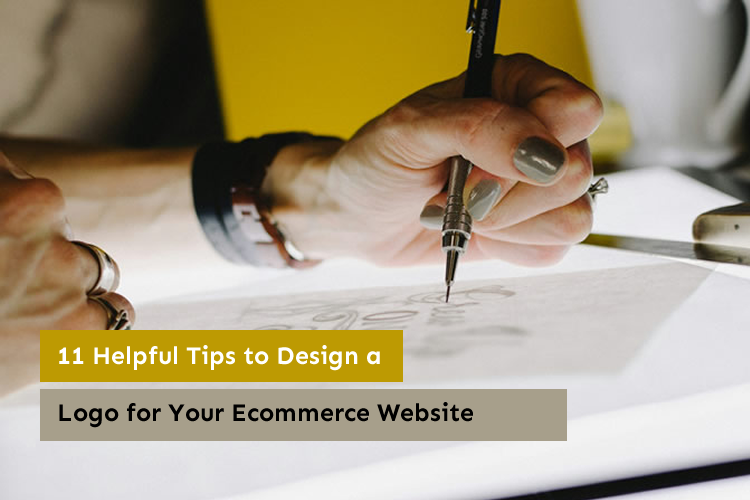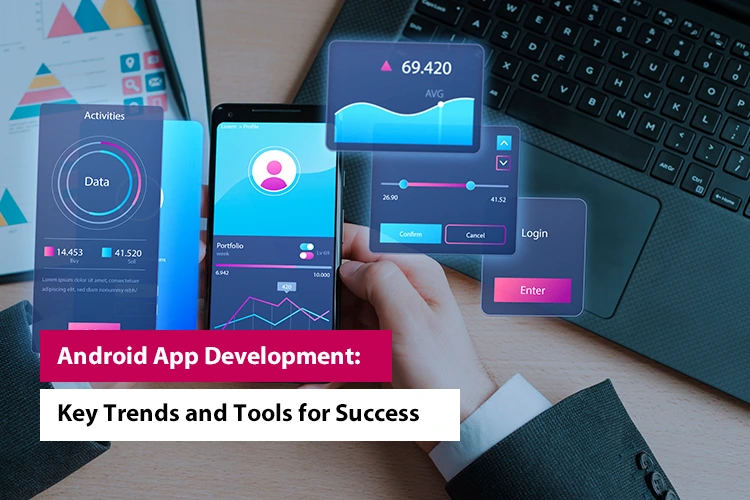11 Helpful Tips to Design a Logo for Your Ecommerce Website

In the vast landscape of ecommerce, where digital storefronts abound and competition is fierce, the significance of a well-designed logo cannot be overstated. Your logo serves as the visual cornerstone of your brand identity, the emblem that encapsulates the essence of your business and resonates with your target audience. As the gateway to your ecommerce website, your logo is often the first point of contact for potential customers, making a lasting impression that can shape their perceptions and interactions with your brand.
Statistics underscore the importance of logo design in the ecommerce realm. According to a study by the Missouri University of Science and Technology, it takes consumers a mere 0.05 seconds to form an opinion about a website, and 94% of first impressions are design-related. Additionally, research by Nielsen Norman Group reveals that users often judge a website’s credibility based on its visual design, with 48% citing a website’s design as the number one factor in determining the credibility of a business.
In this dynamic digital ecosystem, where attention spans are fleeting and consumer choices are abundant, the importance of crafting a compelling and memorable logo for your ecommerce website cannot be overlooked. In this blog post, we will explore the critical role of logo design in establishing brand identity and fostering customer engagement in the ecommerce realm. We’ll delve into expert tips and strategies to guide you through the logo design process, equipping you with the knowledge and insights needed to create a logo that captivates your audience, distinguishes your brand, and sets the stage for success in the competitive online marketplace.
Why Should You Focus on Logo Design for Your Ecommerce Website?

In the bustling world of ecommerce, where businesses vie for attention in crowded digital marketplaces, the significance of logo design cannot be overstated. Here’s why focusing on your logo design is paramount for the success of your ecommerce website:
Brand Identity and Recognition
Your logo serves as the visual cornerstone of your brand identity. It’s the face of your business, the symbol that customers associate with your products or services. A well-crafted logo communicates your brand’s values, personality, and mission succinctly, making it easier for consumers to recognize and connect with your brand amidst the myriad of options available online.
Read Our Old Blog : A Detailed Guide on Creating an eCommerce App From Scratch
First Impression Matters
In the virtual realm of ecommerce, where physical interactions are absent, your logo acts as the initial point of contact between your brand and potential customers. It’s often the first thing visitors notice when they land on your website or come across your social media profiles. A professionally designed logo can leave a lasting impression of professionalism, trustworthiness, and reliability, compelling users to explore further and engage with your brand.
Establishes Credibility and Trust
A polished logo exudes professionalism and signals to customers that your business is legitimate and trustworthy. In an era where online scams and counterfeit products abound, a well-designed logo can help alleviate consumer skepticism and instill confidence in your brand. By investing in a high-quality logo, you demonstrate your commitment to excellence and customer satisfaction, fostering trust and loyalty among your target audience.
Differentiation in a Saturated Market
With countless ecommerce websites competing for consumers’ attention, standing out from the crowd is essential for success. Your logo serves as a crucial tool for differentiation, allowing you to carve out a distinct identity in your niche market. A unique and memorable logo sets your brand apart from competitors, making it easier for customers to recall and choose your products or services over others.
Consistency Across Platforms
In today’s omnichannel landscape, where consumers interact with brands across multiple touchpoints, consistency is key. Your logo acts as a unifying element across various platforms and channels, from your website and social media profiles to email marketing campaigns and product packaging. Consistent use of your logo reinforces brand recognition and strengthens brand recall, facilitating seamless brand experiences for customers regardless of where they encounter your brand.
11 Top Tips to Design a Logo for Ecommerce Website

Creating a logo for your ecommerce website is a pivotal step in establishing your brand identity and fostering customer engagement. Here are eleven expert tips to guide you through the logo design process and ensure that your ecommerce logo leaves a lasting impression:
1. Understand Your Target Audience
Before delving into the design process, it’s essential to have a deep understanding of your target audience. Conduct thorough market research to identify the demographics, preferences, and psychographics of your potential customers. Understanding their needs, desires, and pain points will help you create a logo that resonates with them and builds a strong connection.
Read Our Page : Offshore eCommerce Development Services
2. Research Your Competitors
In the competitive landscape of ecommerce, it’s crucial to stand out from the crowd. Start by researching your competitors’ logos to gain insights into industry trends, common visual elements, and design conventions. Identify both successful and ineffective approaches to logo design within your niche, and use this information to craft a distinctive and memorable logo that sets your ecommerce website apart.
3. Reflect Your Brand Identity
Your logo should serve as a visual representation of your brand identity and values. Take the time to define your brand’s personality, positioning, and unique selling propositions. Whether your brand is known for its innovation, reliability, or affordability, ensure that your logo encapsulates these attributes and communicates the essence of your ecommerce business effectively.
4. Keep It Simple Yet Memorable
In the fast-paced digital world, simplicity reigns supreme when it comes to logo design. Aim for a clean and uncluttered design that conveys your brand’s message succinctly. A simple logo is not only easier to recognize and remember but also more versatile across various platforms and applications. Focus on creating a memorable logo that leaves a lasting impression on customers, driving brand recall and recognition.
5. Choose Appropriate Colors
Color psychology plays a significant role in logo design, as different colors evoke distinct emotions and associations. Select a color palette that resonates with your target audience and aligns with your brand’s personality and values. Consider the cultural and psychological connotations of different colors, and choose hues that evoke the desired sentiments and perceptions among your customers.
6. Opt for Scalability
Your ecommerce logo will appear across a multitude of platforms and devices, from desktop computers to mobile devices to promotional materials. Design your logo with scalability in mind, ensuring that it remains legible and visually appealing regardless of size or resolution. Avoid intricate details or overly complex designs that may become indiscernible when scaled down, and prioritize clarity and readability to maintain the integrity of your logo across all applications.
7. Prioritize Versatility
Versatility is key when it comes to logo design, especially in today’s omnichannel environment where brands interact with customers across multiple touchpoints. Your logo should be adaptable to various contexts, backgrounds, and mediums without losing its impact or legibility. Test your logo across different layouts, color schemes, and applications to ensure that it remains effective and recognizable in any scenario.
8. Incorporate Symbolism Thoughtfully
Symbols and icons can add depth and meaning to your logo, helping to convey the essence of your ecommerce business visually. If incorporating symbols, ensure that they are relevant to your industry, products, or brand values. Thoughtfully integrate symbols or icons that resonate with your target audience and reinforce your brand’s messaging, making your logo more engaging and memorable to customers.
9. Focus on Typography
Typography plays a crucial role in logo design, as it can convey tone, personality, and brand identity. Choose fonts that complement your brand’s aesthetic and resonate with your target audience. Consider factors such as legibility, readability, and visual appeal when selecting typography for your logo. Whether you opt for a classic serif font or a modern sans-serif typeface, ensure that your typography enhances the overall cohesiveness and impact of your logo design.
Read Our Blog : Challenges In Developing An eCommerce Mobile App
10. Test and Iterate
Designing a logo is an iterative process that requires feedback and refinement to achieve the desired result. Once you’ve developed a preliminary logo design, solicit feedback from stakeholders, colleagues, and even potential customers. Pay attention to their insights, suggestions, and critiques, and use this feedback to refine and iterate on your design. Continuously test different variations and iterations of your logo to ensure that it resonates with your target audience and effectively communicates your brand identity.
11. Ensure Legal Compliance
Before finalizing your logo design, it’s essential to conduct a thorough trademark search to ensure that your logo is unique and legally protectable. Check for existing trademarks or similar designs that may infringe upon your logo’s uniqueness or cause confusion among consumers. Protect your brand’s intellectual property by registering your logo as a trademark, safeguarding it from unauthorized use or imitation by competitors. Prioritize legal compliance to avoid potential legal disputes and protect the integrity and exclusivity of your brand identity.
By following these eleven expert tips, you can navigate the logo design process effectively and create a compelling and memorable logo for your ecommerce website. Remember to stay true to your brand identity, prioritize simplicity and versatility, and iterate on your design based on feedback and testing. A well-designed logo not only enhances brand recognition and customer engagement but also serves as a powerful symbol of your ecommerce business’s identity and values.
Conclusion
In the ever-evolving world of ecommerce, where consumer preferences shift rapidly and online competition intensifies, the power of a well-crafted logo cannot be overstated. It serves as the visual embodiment of your brand’s identity, the beacon that guides customers to your virtual storefront and leaves a lasting imprint on their minds. As evidenced by compelling statistics, such as those from the Missouri University of Science and Technology and Nielsen Norman Group, the design of your logo directly impacts consumers’ perceptions and judgments of your website’s credibility and appeal.
As you embark on the journey with Imenso Software of logo design for your ecommerce website, remember that every element – from color palette to typography to symbolism – plays a vital role in shaping your brand’s narrative and resonating with your target audience. By following the expert tips and strategies outlined in this blog post, you can create a logo that not only captivates your audience but also sets your brand apart in the crowded digital marketplace.
Are you ready to elevate your ecommerce brand with a stunning logo that speaks volumes about your business? Imenso Software is here to help you bring your vision to life. Our team of experienced designers specializes in crafting custom logos that encapsulate the essence of your brand and resonate with your target audience. Contact us today to learn more about our logo design services and take the first step towards making a memorable impression in the world of ecommerce.
Remember, your logo is more than just a visual symbol – it’s the cornerstone of your brand identity and the key to unlocking success in the competitive ecommerce landscape. Invest in your brand’s future today with Imenso Software.
We’re honored to mention that our efforts have been recognized by renowned B2B review and research platforms such as GoodFirms, Clutch, MirrorView, and many more.
Want more information about our services?
Similar Posts

Android App Development: Key Trends and Tools for Success
Have you ever wondered what makes some Android apps an overnight sensation, while others struggle to gain recognition in the crowded marketplace? The secret lies in the dynamic world of Android app development, where creativity, innovation, and the right tools can transform a mere concept into a user’s everyday essentials. In this ever-evolving ecosystem, developers […]...

DevOps Testing Strategy: Why You Need One For Agile Software Development?
DevOps combines strategies, philosophies, tools and practices to help organizations build and deliver digital solutions and services fast. The goal of DevOps is to streamline and automate the application development lifecycle. ...

A Foolproof Guide to Successfully Uploading Your App to Play Store & App Store
Have you ever wondered how to turn your brilliant app idea into a reality on the app stores? If this question has been lingering in your thoughts, you’re about to discover the key. Welcome to the world of app submission – a pivotal phase that often appears as a complex puzzle. Fortunately, our comprehensive guide […]...









